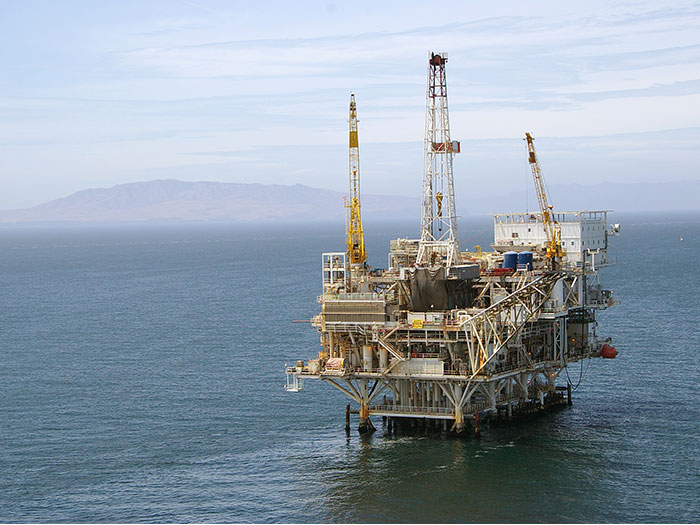
How long before Gulf oil and gas production gets back on track?
Written by Nick Blenkey
Image:BSEE
Efforts are underway to get U.S. Gulf of Mexico oil and gas production up and running in the wake of Hurricane Ida. Critical to these efforts will be resuming operations at Port Fourchon, La., which is where the storm came ashore and which services nearly 100% of all deepwater energy activity in the U.S. Gulf.
The Greater Lafourche Port Commission’s Executive Director Chett Chiasson was among area leaders, including Parish President Archie Chaisson, who met and talked with President Joe Biden last Friday evening at the South Lafourche Leonard J. Miller Jr. Airport in Galliano.
Following what was described as “a very productive meeting,” Chiasson said, “We have begun our recovery in earnest but need the help of the federal government to expedite that recovery. We were happy the president visited our area and took a keen interest in what we had to say.”
As of 5:45 p.m. September 3, it was announced the U.S. Coast Guard is allowing conditional access to Port Fourchon waterways, including Belle Pass, with restrictions for daylight operations only. Vessels in port can maneuver in port waterways. Navigation through the main channel in Belle Pass is one lane only, with no meeting or overtaking in the channel.
“This is a huge step for us and our valued tenants and users of Port Fourchon to begin returning to some sense of normalcy, Chiasson said. “Through the hard work of so many, including our board of commissioners and staff as well as supporting agencies like the Coastal Protection Restoration Authority with the incredible work they have done building up our coastal defenses, we have done what many thought impossible. We have regained access to our main channel in less than a week following a hurricane that blasted our port with an estimated 12–14-foot storm surge as well as wind gusts in excess of 190 mph.”
PRODUCTION SHUT IN
The Bureau of Safety and Environmental Enforcement (BSEE) reports that based on data from offshore operator reports submitted as of 11:30 CDT Monday, personnel have been evacuated from a total of 99 production platforms, 17.68% of the 560 manned platforms in the Gulf of Mexico.
Personnel have been evacuated from five rigs (non-dynamically positioned), equivalent to 45.45% of the 11 rigs of this type currently operating in the Gulf. Rigs can include several types of offshore drilling facilities including jackup rigs, platform rigs, all submersibles and moored semisubmersibles.
A total of three dynamically positioned rigs remain off location. This number represents 20% of the 15 DP rigs currently operating in the Gulf.
From operator reports, it is estimated that approximately 83.87% of the current oil production in the Gulf of Mexico has been shut in. BSEE estimates that approximately 80.78% of the gas production in the Gulf of Mexico has been shut in. The production percentages are calculated using information submitted by offshore operators in daily reports. Shut-in production information included in these reports is based on the amount of oil and gas the operator expected to produce that day. The shut-in production figures therefore are estimates, which BSEE compares to historical production reports to ensure the estimates follow a logical pattern.
Facilities are being inspected. Once all standard checks have been completed, says BSEE, production from undamaged facilities will be brought back online immediately. Facilities sustaining damage may take longer to bring back online.




